Below is a detailed Biography of Mary Kingsley, an English ethnographic and scientific writer.
Mary Kingsley Biography
Mary Kingsley was born on the 13th of October, 1862 to a British Doctor and writer – George Kingsley. George was also known for his role as a traveler and executioner. He worked for George Herbert and the 13th Earl of Pembroke and other British aristocrats.
He was mostly away from home on his various excursions, one of them being his assistance to Lord Dunraven on a trip to North America during 1870-1875.
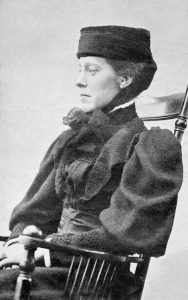
Since he experienced the British rule over the Native Americans, he had his own views on British imperialism which shaped his daughter – Mary Kingsley’s views over the British Imperialism in West Africa. Her mother’s name was Mary Bailey.
Mary Kingsley’s schooling was less formal compared to her brothers since she lived in a time when formal education to girls was not considered important. However, she had complete access to her father’s extensive library which she made complete use of.
What did Mary Kingsley Discover
She was more into reading scientific matter related to new discoveries and those written by explorers and less interested in reading books by Jane Austen and Charlotte Bronte which were more preferred by women of her age in her time.
She enjoyed listening to her father’s stories about his expeditions. She studied medicine in 1891 while her brother – Charles Kingsley was studying law.
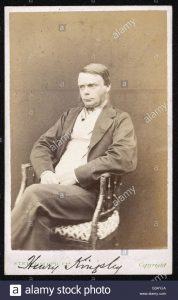
They lost their father to rheumatic fever in February 1892. Their mother – Mrs. Mary Bailey Kingsley followed her husband to the grave in the same year in the month of April.
Mary Kingsley now had the freedom of choosing whichever career path she wanted to follow without any external pressure. Hence, she decided to travel and carry out excursions just like her father.
Journey to Africa
Mary had never been abroad her entire academic life. But she was always a traveler at heart because of her father’s excursion stories and reading all the books on travel and hiking available to her in her father’s library.
She was always fascinated by studying about Africa and also the rest of the world. She had only visited Paris in 1888.
Mary Kingsley’s Family
After the death of both her parents and receiving her share of the family inheritance, she took her preliminary visit to the Canary Islands after which she decided to explore the west coast of Africa about which she has always been fascinated.
Women in the Victorian era were considered unfit to travel and go on such adventures back in the day. She was always questioned about her husband by people and why she hasn’t been accompanied by him. On 17 August 1893, Mary landed in Sierra Leone.
The local people taught her basic tricks of survival. She was brave enough to explore dangerous areas on her own. She knew some survival basics from the training she took as a nurse, about wrapping wounds and getting through the jungle maladies.
Early Life of Mary Kingsley
She was back in England in December month of the same year. It was considered surprising for a single woman to return back from the West Coast of Africa as so many European men set out to explore in groups and never returned.
She made another journey to Africa in the following year in the month of December, this time being keen on maintaining journals and collecting specimens.
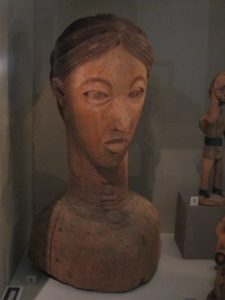
She was the first European woman to top the highest peak of the West Coast of Africa, Mount Cameroon. She was accompanied by only two members of her small support team, one of them couldn’t make it back through the last lap.
She had a number of dangerous encounters which she got through very bravely as mentioned in her journals and write-ups and told by her support teams.
Mary Kingsley Facts
She encountered swamps of mosquitoes and sandflies in a huge number, yet saved herself from incurable diseases (in the Victorian era) like malaria.
In her “Travels to Africa,” she mentions how a huge crocodile slowly tried to enter her canoe to which she was alert enough to paddle away. She almost stumbled into a leopard while escaping a tornado.
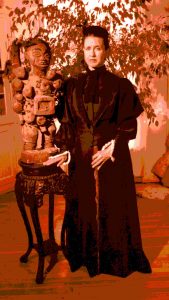
However, she has only explored the forests, not hunted. She maintained her codes of conduct as a woman as she mentioned in a speech “it’s not lady-like to hide behind a bush and shoot things with a gun”.
She has always been kind to the wildlife she encountered and respected its majesty. She never hurt an animal intentionally.
Writings and Discoveries
Mary Kingsley bought from her African trips, a live reptile and rare fish specimen that was named after her. These belonged to the London Zoo.
She brought with her some ethnographic writings and her experiences recorded in books which were not only informative but also entertaining.
She wrote the “Travels in West Africa” in 1897 and the “West African Studies” in 1899. Her writings recorded her experiences and helped shape British perceptions of the African tribes and British Imperialism.
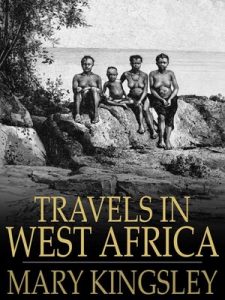
She recorded her daring and thought-provoking encounters and ways to overcome these difficulties. She was critical of missionary endeavors and colonialism.
She understood slavery in Africa and tried to answer specific needs. She used her feminity as a tool to get along with the fierce tribal people and learn from them.
Colonial Law
She was also against the colonial law of the “hut tax” and put herself forward to debate against it. She found it utterly unjust and argued that it was completely against the right of possession.
She was feminist in nature and spoke for the women who were trapped in slavery and made to do heavy labor as well as take care of the household. She fought for their rights as well.
Mary Kingsley Books
She openly expressed all these thoughts and views of hers in her books as well as her speeches. She gave her first lecture at the Scottish and Liverpool Geographical Societies where she was sitting on the platform and a male committee member would read out her speech loudly.
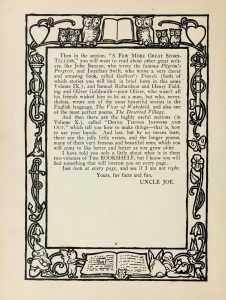
But later, she became the first woman to lecture over 2000 students at the Liverpool and Manchester Chamber of Commerce. She did the same at Newcastle and Dundee.
In 1900, she wrote a short book on “The Story of West Africa” which was she claimed to be a part of her fathers writings – “Notes on Sports and Travel” by George Henry Kingsley.
Death of Mary Kingsley
For the last time in March 1900, Mary set out to Africa. She volunteered as a nurse in Cape Town and served the victims of the Second Boer War. She volunteered for around two months after which she remained ill herself and started developing symptoms of typhoid.
Before she could travel to favorite part – the Western Coast, she died in Simonstown in South Africa on 3rd June 1900.
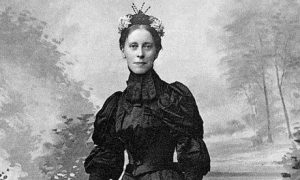
Eyewitnesses reported that she asked to be left to alone since she did not want anybody to see her in this state of weakness. According to her wish, she was buried at sea.
She is remembered for her bravery and bold attitude. She is well known to transform the British perceptions in all aspects she excelled at.
More Info On- John Carlin, Marie Taglioni, Edward Hicks, Charles Frederick Worth